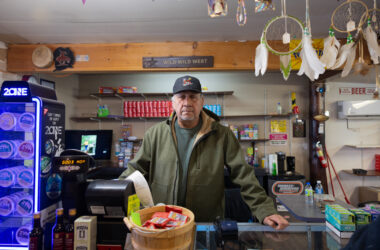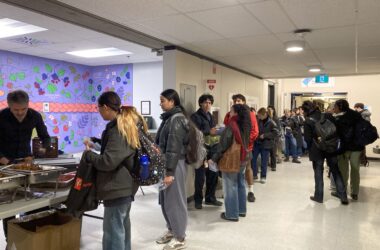On Friday, Roberto Caso, an associate professor of comparative private law at the University of Trento in Italy, addressed a small but full room of law students and faculty at Chancellor Day Hall, discussing copyright law and technology across various contexts.
In his presentation, Caso explained that there is a “need to increase the study about the interaction between the different tools of information control.” Caso covered a wide range of topics, including music, printed word, and movies, as well as their various standards for plagiarism and the complications that arise when trying to compare them in either a formal, legal sense or an informal, social sense.
One theme that appeared numerous times throughout Caso’s presentation was our natural ability to know when something is plagiarized. On the one hand, Caso used the example of comparing Michael Jackson’s “Will You Be There” with the Italian songwriter Al Bano’s “I Cigni di Balaka” (“The Swans of Balaka”) to demonstrate how we are often able to recognize similarities in songs and point out plagiarism. On the other hand, Caso compared a scene from “2001: A Space Odyssey” to a parody from “History of the World Part I” to demonstrate how parodies are generally not considered plagiarism.
Caso noted that there are a number of social norms in different types of media that are often obvious to people, but can be quite difficult to formally capture in the law.
“Overall, in this age it is impossible to think that there exists one solution for all problems,” Caso said. “Each community has its own rules. All that we can do is study these kinds of rules and understand [these relationships]. The variety of the rules is a very good thing.”
David Lametti, associate dean (academic) and associate professor of Law at McGill, is the director of the Centre for Intellectual Property Policy, which sponsored Caso’s seminar.
“The CIPP invites scholars such as Professor Caso to speak on the topic because there is a specific interest, and because of the work and reputation of the speaker,” Lametti said.
This was the second time Caso presented his argument in a public forum and he admitted that it is a “work in progress.” Based on input from colleagues and listeners, he plans to revise his work and finish writing an article that he hopes to publish within the next few months.
Caso will likely have a lot of comments to work with, as attendees spent roughly 35 minutes after the presentation asking questions or offering comments and reactions to the talk.
Olivier Cournoyer Boutin, a fourth-year law student at McGill, found the talk to be very informative.
“It was really interesting,” he said. “I was here because I am thinking about doing a paper on the field of natural property. I found that it was a good summary of all the issues, and it showed me how this field is quite complicated.”
In an age of high-tech information sharing, plagiarism has become a serious issue, especially in the demanding world of high-level academia.
Issues concerning the difference between plagiarism for academic use as compared to that for business use were raised in the seminar. Also, with an increase in the amount of available material online, a need has developed for technologies to track plagiarism, such as turnitin.com and plagiarismdetect.com.
“In the university community, we’re trying to teach people to think, we’re trying to foster thinking, we’re trying to get people to move ideas forward,” said Lametti, who also acts as a disciplinary officer who must enforce the rules of plagiarism. “We’re trying to get people to acknowledge their sources and say, ‘Here’s where I want to push it.’ [But] you don’t want people to take ideas from other people without saying [so].”
“You can find some articles about the intersection between social norms and copyright law, but we are at the beginning of this study,” Caso said. “I think this is a very promising line of thinking.”






